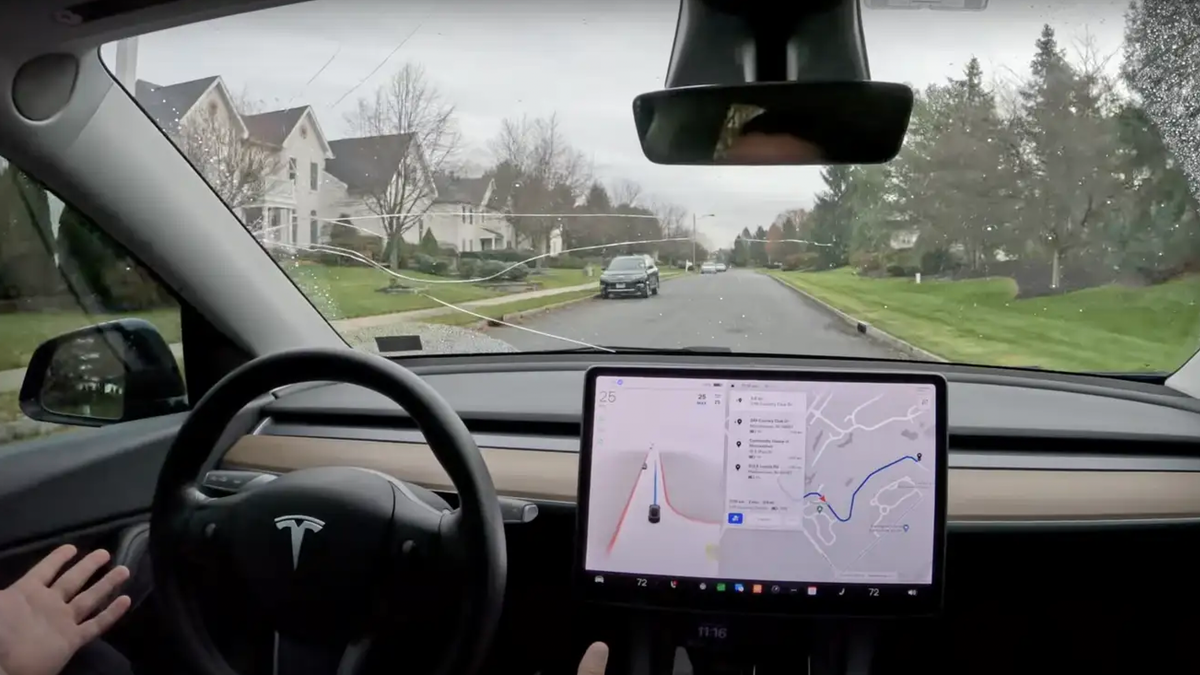A Tesla Model S had Full Self-Driving engaged when it hit and killed a 28-year-old on a motorcycle near Seattle in April. This marks at least the second fatal accident involving Elon Musk’s prized driver assistance technology.
The driver, a 56-year-old man – was arrested on suspicion of vehicular homicide. He admitted that he was looking at his cell phone while FSD was engaged, according to the Associated Press. Of course, Tesla says its “Full Self-Driving (Supervised)” software requires active driver supervision and does not make the vehicle autonomous. This doesn’t hasn’t stopped some drivers from being reckless while the program is engaged.
The crash happened in a suburban area about 15 miles northeast of Seattle while the driver was using his cell phone.
“The next thing he knew there was a bang and the vehicle lurched forward as it accelerated and collided with the motorcycle in front of him,” the trooper wrote in a probable-cause document.
The 56-year-old driver was arrested for investigation of vehicular homicide “based on the admitted inattention to driving, while on Autopilot mode, and the distraction of the cell phone while moving forward, putting trust in the machine to drive for him,” the affidavit said.
The 28-year-old motorcyclist was under the car and pronounced dead at the scene, according to the AP.
The National Highway Traffic Safety Administration told Reuters that it was “aware of this crash and is gathering information from local law enforcement and Tesla.” Right now, police say the case remains under investigation, but some feel there are major limitations to Tesla’s technology, which is dependent on cameras and artificial intelligence. Other companies chasing autonomy (like Waymo and Cruise) use a smattering of sensors like lidar to “see” the driving environment.
Here’s more on Tesla’s flawed system, from Reuters:
“There are so many things that can go wrong” with Tesla’s camera-only system, said Guidehouse Insights analyst Sam Abuelsamid. For instance, he said it can inaccurately measure how far away an object is.
“It is extremely challenging to collect and curate data from all sorts of real-world elements such as motorcycles and bicycles in the broad range of possible weather, lightning, road and traffic conditions,” said Raj Rajkumar, a professor of electrical and computer engineering at Carnegie Mellon University.
This tragic crash comes on the heels of CEO Elon Musk and Tesla shelving more affordable cars as it focuses on self-driving vehicles instead. Musk has previously said he would be “shocked” if Tesla cannot achieve full self-driving capabilities by the end of this year.
NHTSA began probing Autopilot back in 2021 after it identified more than a dozen crashes in which Teslas hit stationary emergency vehicles, according to Reuters. It has also reviewed hundreds of other crashes involving the system.

